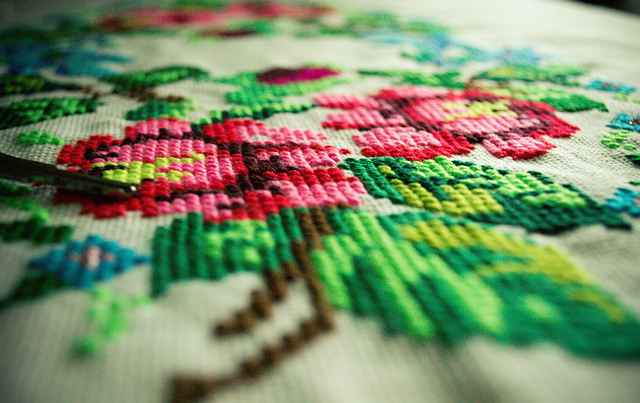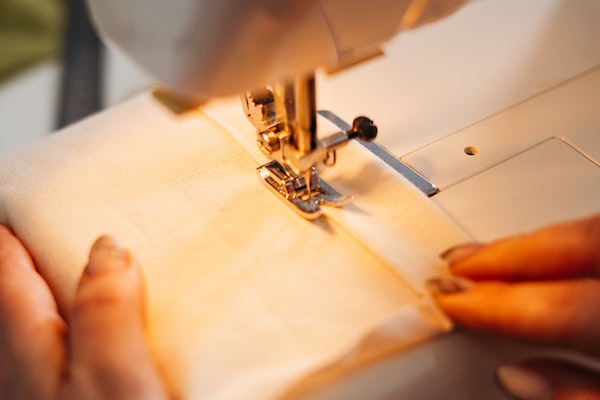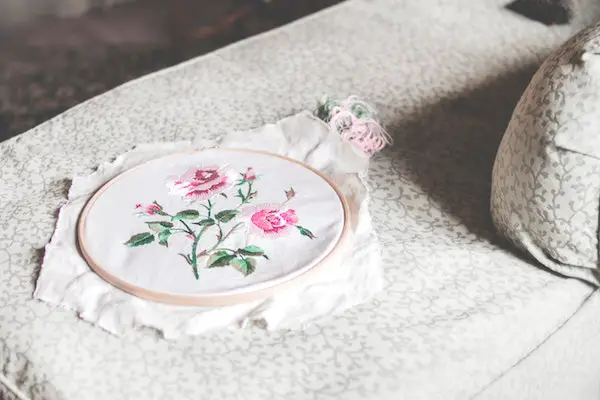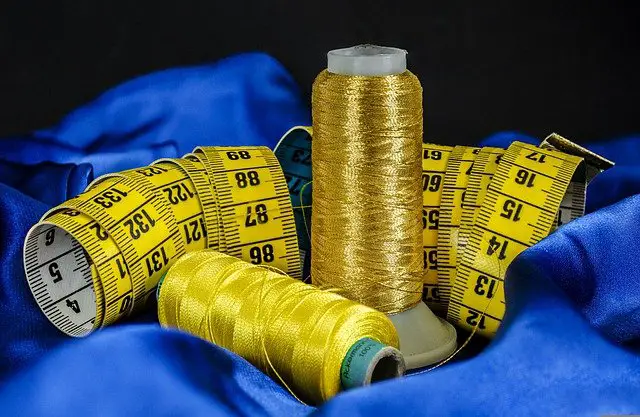Difference Between Stitching and Sewing? (2023)
Sewing and stitching are basic sewing techniques that create clothes, bags, and other items. However, there is a big difference between the two methods.
Stitching is a more general term for any sewing type. Sewing, on the other hand, refers only to using stitches made with a needle and thread.

What is Sewing, and What is Stitching?
Sewing is assembling two pieces of fabric by sewing through their edges, done with a machine or by hand.
Stitching is a type of sewing where the fabric is not joined together but overlapped. The procedure involves using a needle and thread and usually requires less visible areas, such as seams and seams.
What is the difference between stitching and sewing?
Threads or threading machines join two pieces of fabric together.
It is more precise and time-consuming to sew using a needle and thread.
Fabric holding is another crucial difference between stitching and sewing.
Sewing holds the fabrics together by threads, while sewing stitches their edges together using sergers or zigzags.
It has a neater finish and prevents fraying.
Sewing is generally more precise and quicker than stitching, but both are equally beneficial.
Ultimately, it depends on the project you are working on and your sewing skills, whether you prefer stitching or sewing.
The Different Types of Sewing
Stitching is a common term used to describe the act of sewing by hand.
Sewing machines are designed to join fabrics, but the stitching is essential for anyone who sews. There are several types of stitching, each with its advantages and disadvantages.
Piping: Piping is the most basic form of stitching, and the method connects two pieces of fabric on one edge. Piping is easiest when the materials are the same width and you use it for simple seams, such as binding.
Basting: Basting is a type of stitching typically used with piping. It’s a temporary stitch that helps hold the pieces of fabric together while you sew them together.
It is possible to base it on thread or adhesive.
Straight Stitch: A straight stitch is one of the simplest stitches you can make. You use the sewing line for consecutive stitches, such as hemming a garment or attaching garments.
Straight stitches are also solid and durable, making them perfect for applications where strength is essential, such as seam binding or zippers.
Zigzag Stitch: A zigzag stitch is a type of stitch that alternates between long and short stitches. The product creates a smooth finish on fabrics and prevents skin irritation.
Hammer Stitch: A hammer stitch is a type that uses a hammer to create the stitch. Strong, it is an excellent stitch for attaching heavy fabrics such as quilts or jackets.

Tailor’s Knot: Tutor’s knot attaches fabric at the edge of the material. It’s a tight knot that’s easy to undo, making it perfect for attaching delicate fabrics.
Advantages of Sewing
There are a few key advantages to sewing over stitching. One advantage of sewing with a machine is that it allows you to do it with greater accuracy and control.
Sewing also allows for more flexibility regarding how the final product looks due to its ability to incorporate freehand or machine sewing.
In contrast, stitching is often more limited in terms of design possibilities.
Another advantage of sewing is that it’s typically faster than stitching.
The reason is that a machine can sew through multiple layers of fabric simultaneously, compared to stitching only one layer at a time.
As a result, your project will ultimately be completed faster with sewing.
Overall, there are several critical advantages to sewing over the stitching. If you want to create a more accurate and professional-looking product, sewing is the way.
Disadvantages of Sewing
Before you decide to sew or stitch, consider a few disadvantages of sewing. The most significant burden of sewing is the time required to complete a project.
Sewing is often slower than stitching, requiring more time and patience to complete a task. Additionally, sewing requires more materials than stitching, which can be costly.
Lastly, if the material is wrong for a sewing project, it can fail prematurely.
Sewing Tools and Equipment
There are a few critical differences between stitching and sewing. Sewing machines use needles to go through the fabric materials, whereas stitches are made by pulling a needle and threading through the material by hand.
Sewing fabrics can also vary: knits can be sewn on a machine, but seams must be tailored since they will not lie flat; cotton and linens can also be hemmed with a straight stitch,

Regarding tools and equipment, stitching and sewing require some basic supplies: needles, thread, scissors, seam ripper/puller, ruler or another straight edge, and a seam guide (or interfacing).
For sewers, a serger is a bonus; it has extra feed dogs that help with the zigzag stitch and gives the finished product a neater appearance.
Types of Fabric That Can Be Sewed or Stitched
Many fabric types can be sewn or stitched, each with unique benefits. Here’s a closer look at some of the most common ones.
Fabric Types
Linen: A soft and delicate fabric, linen is perfect for summer wear because it is lightweight and breezy. It is also resistant to wrinkles, making it an excellent choice for garments to be worn repeatedly.
Cotton: A popular choice for clothing because it is easy to care for and keeps you cool in summer; cotton also makes an excellent fabric for items that need durability, like pants or jackets. It has a bit of stretch to conform to your body well.
Polyester: Polyester is a popular fabric choice because it is durable and wrinkle-free. It is also an excellent choice for pants or skirts that you might want to wear multiple times.
Rayon: A lightweight and drapey fabric, rayon is perfect for things like blouses or dresses. Additionally, it has a nice shine, so it is excellent for items that require a little extra pizzazz.
Wool: Wool is a heavyweight fabric that is great for sweaters and coats. Also, it is beautiful so you can wear it for dresses or skirts. Wool is not as wrinkle-resistant as some other fabrics, so it may require more attention to keep it looking its best.
Silk: A luxurious and expensive fabric, silk is perfect for things like formal wear or eveningwear. It is also wrinkle-resistant; this allows it to be worn multiple times without washing.
Advantages of Sewing or Stitching Over Cutting or Glueing
There are a few key advantages to consider when it comes to sewing and stitching versus cutting or glueing.
First, stitches provide a more robust and durable connection than cuts or glues. It is vital to keep in mind that fabrics stretch and move.
Second, stitches can be hidden or covered up, which is excellent for projects that require confidentiality or discretion. For example, a sewist might sew up the top of a dress, so the cloth doesn’t show when worn.
Finally, stitches require less time and effort than cuts or glues. Vital when it is crucial to complete a project quickly.
Stitches and How to Use Them
There is a big difference between stitching and sewing, and it’s essential to know the difference if you want to do either of these things well.
The use of stitches is mainly for making simple seams. It is more versatile and can be used for numerous tasks, such as adding fabric pieces, making adjustments to fabric, or even creating new materials from scratch.
Here are a few ways to understand the different uses of stitching and sewing:

-Stitching creates simple seams that will hold the fabric together.
In contrast, stitching is limited to creating simple seams. -Sewing enables you to attach fabric pieces in various ways, make adjustments to fabric, or create new materials from scratch.
Now that you understand the difference between stitching and sewing, it’s time to learn how to stitch!
Conclusion
Stitching and sewing are two terms that are commonly thought of interchangeably, but they have a lot of different meanings.
Stitching is simply joining pieces of fabric together by looping one thread around the outside of one piece of cloth and pulling it tight, then doing the same to the other part.
On the other hand, sewing involves using multiple threads to create a seam between two pieces of fabric.



